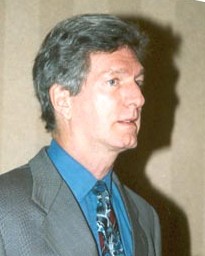Quantum Vacuum Zero Point and Negative Energy: Theory and Applications
Year: 2011 Pages: 8
The quantum vacuum with filled negative energy states presents an unlimited source of potential energy. The well known built-in voltage potential for some select semiconductor p-n junctions and various rectifying devices is proposed to be favorable for generating DC electricity at ?zero bias? (with no DC bias voltage applied) in the presence of Johnson noise or 1/f noise which originates from negative energy in the quantum vacuum (Koch, 1982). The 1982 Koch discovery that certain solid state devices exhibit measurable quantum noise has also recently been labeled a finding of dark energy in the lab (Beck, 2004). Tunnel diodes are a class of rectifiers that are qualified and some have been credited with conducting only because of quantum fluctuations. Microwave diodes are also good choices since many are designed for zero bias operation. A completely passive, unamplified zero bias diode converter/detector for millimeter (GHz) waves was developed by HRL Labs in 2006 under a DARPA contract, utilizing a Sb-based "backward tunnel diode" (BTD). It is reported to be a "true zero-bias diode". It was developed for a "field radiometer" to "collect thermally radiated power" (in other words, 'night vision'). The diode array mounting allows a feed from horn antenna, which functions as a passive concentrating amplifier. An important clue is the "noise equivalent power" of 1.1 pW per root hertz and the "noise equivalent temperature difference" of 10?K, which indicate sensitivity to Johnson noise (Lynch, et al., 2006). There also have been other inventions such as "single electron transistors" that also have "the highest signal to noise ratio" near zero bias. Furthermore, "ultrasensitive" devices that convert radio frequencies have been invented that operate at outer space temperatures (3 degrees above zero point: 3?K). These devices are tiny nanotech devices which are suitable for assembly in parallel circuits (such as a 2-D array) to possibly produce zero point energy (ZPE) direct current electricity with significant power density (Brenning et al., 2006). Photovoltaic p-n junction cells are also considered for possible higher frequency ZPE transduction. Diode arrays of self-assembled molecular rectifiers or preferably, nano-sized cylindrical diodes are shown to reasonably provide for rectification of electron fluctuations from thermal and non-thermal ZPE sources to create an alternative energy DC electrical generator in the picowatt per diode range.


